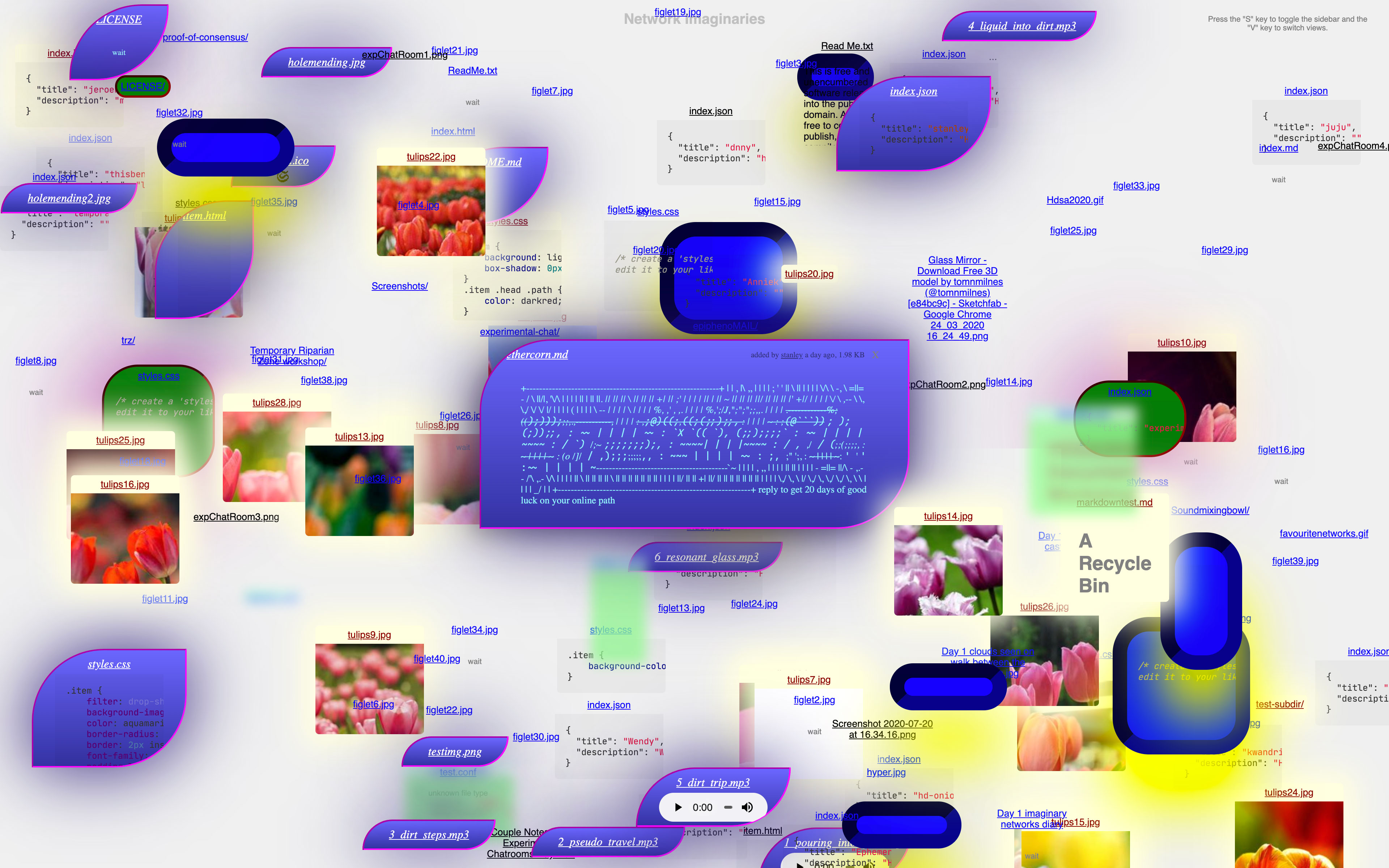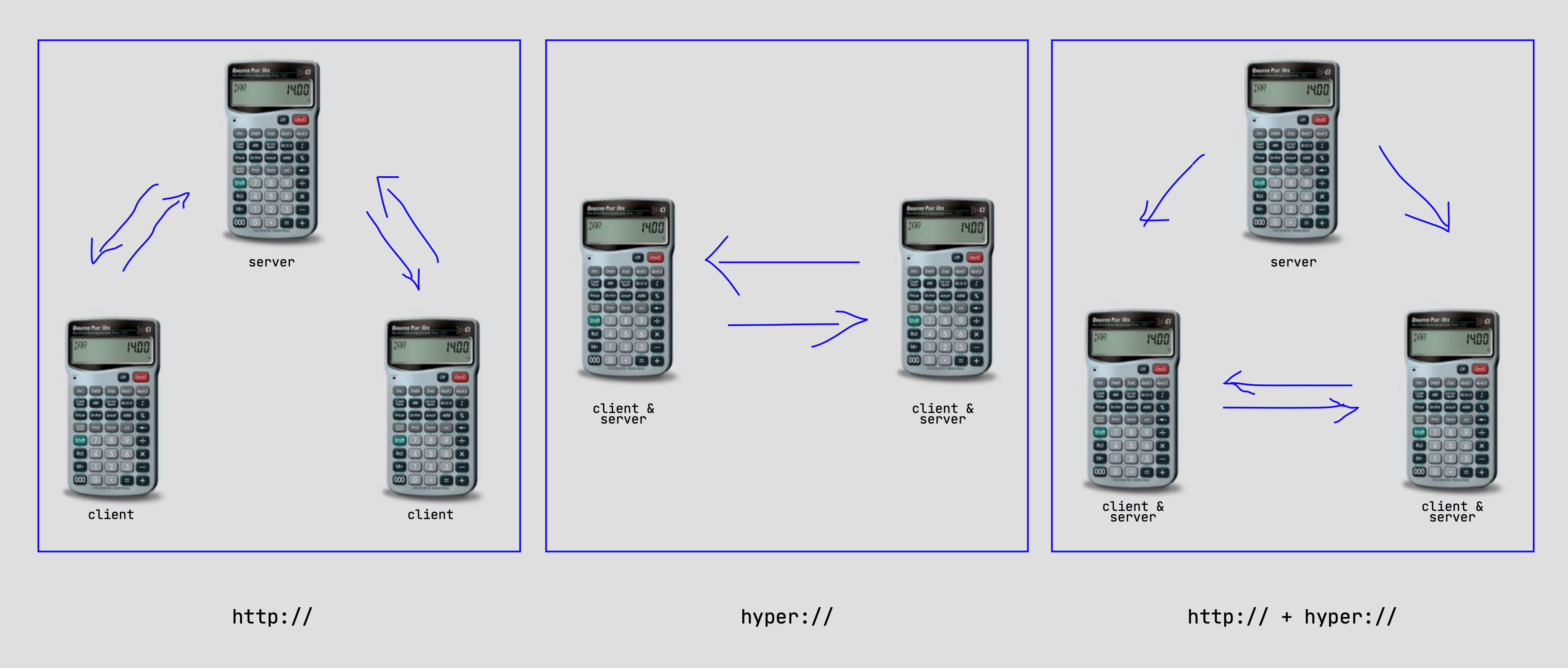Becoming a Server: Difference between revisions
No edit summary |
No edit summary |
||
| Line 36: | Line 36: | ||
You can find the code and instructions to build your own Hyperdrive Portal for you and your friends [https://github.com/karlmoubarak/hyperdrive-portal here]. | You can find the code and instructions to build your own Hyperdrive Portal for you and your friends [https://github.com/karlmoubarak/hyperdrive-portal here]. | ||
= The | = The Network is Ephemeral = | ||
The files are accessible as long as our computers are on and connected to the Internet, or another computer is seeding our files. This will not be the case for a long time. We will not be online forever, our folders will change, and so will our computers. Hyperdrives and parts of hyperdrives will stop working, and even break. It is in our network's nature to deteriorate and fragment over time. | The files are accessible as long as our computers are on and connected to the Internet, or another computer is seeding our files. This will not be the case for a long time. We will not be online forever, our folders will change, and so will our computers. Hyperdrives and parts of hyperdrives will stop working, and even break. It is in our network's nature to deteriorate and fragment over time. | ||
Revision as of 20:41, 5 August 2020
| Becoming a Server | |
|---|---|
| Name | Documentation Workshop: Becoming a Server |
| Location | The Internet and a distributed network of local hosts |
| Date | 2020/07/20-2020/07/22 |
| Time | 14:00-16:00 |
| PeopleOrganisations | |
| Type | HDSA2020 |
| Web | Yes |
| No | |
What role can peer-to-peer networking play in the context of temporary, distributed, and informal education?
Introduction
We based this year's Summer Academy on the idea that, if each participant had a computer and that computer was connected to the Internet, we could create a sufficient distributed learning environment. With this model, process documentation was also distributed. We created a system whereby participants, workshop hosts, and facilitators alike could share their files with each other and to the public domain as a form of ad-hoc process documentation:
- Every participant dedicated a folder on their personal computer for files that they regarded as a part of their process.
- This folder acted as a server, and was accessible through its own unique public key of the form "hyper://....".
- With this set-up, we were able to share files with each other through Beaker Browser by moving them into these folders.
- Last, we made a Hyperdrive Portal to pull the contents of these folders into this webpage: hyperdrives.hackersanddesigners.nl.
During the course of the week, as we came in and out of workshops, we made it a habit to regularly "document and publish" → drop files that we created, edited, or copied into these folders so that we could share them with each other and the rest of the Internet.
Becoming a Server
In this workshop, we learned how to serve these folders from our personal computers to the Internet with Beaker Browser. Becoming a server comes with great responsibility, so we each wrote README files where necessary, decided on what licenses to use for our content, and even styled our own corners of the Hyperdrive Portal. The workshop script can be found here: https://etherpad.hackersanddesigners.nl/p/hdsa2020-documentation-workshop
How It Works
Build Your Own Hyperdrive Portal
You can find the code and instructions to build your own Hyperdrive Portal for you and your friends here.
The Network is Ephemeral
The files are accessible as long as our computers are on and connected to the Internet, or another computer is seeding our files. This will not be the case for a long time. We will not be online forever, our folders will change, and so will our computers. Hyperdrives and parts of hyperdrives will stop working, and even break. It is in our network's nature to deteriorate and fragment over time.

